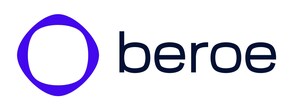RALEIGH, North Carolina, Sept. 24, 2019 /PRNewswire/ -- The global flexible packaging market value is expected to grow at a moderate CAGR of 4-4.5 percent until 2022, according to Beroe Inc, a procurement intelligence firm. Based on end-user segments, the highest growth in demand for flexible packaging till 2021 is expected from the pharmaceutical industry, growing at a CAGR of 6.20 percent, followed by beverages, growing at a CAGR of 5.15 percent in the same period.
At a regional level, APAC has the highest demand growth forecast of 10-10.5 percent, followed by MEA at 6.5 percent and North America and LATAM at 3-3.5 percent each. Asia is the largest regional market for flexible packaging in terms of volume and is expected to increase to a size of 33 million tons by 2021, growing at a CAGR of 4-4.5 percent.
https://www.beroeinc.com/category-intelligence/flexible-packaging-market/
Beroe, which is based in North Carolina, further stated that procurement experts can access this report on its recently launched market intelligence platform Beroe LiVE: live.beroeinc.com
Growing consumer preference for flexible packaging products and rising demand from various end-uses, due to cost and convenience, are the driving factors for the market. Food, beverages, pharmaceutical, and cosmetic industries support the growth for flexible packaging alternatives, like pouches, sachets, and stick-packs as opposed to traditional packaging formats, like containers, jars, cans, and bottles.
The flexible packaging industry faces challenges in the form of regulations, substitute products, economic conditions, and recyclability. Although many countries are fast adapting to the growing need for recyclability, it is a complex process to recycle the laminate structures, as there are multiple materials involved.
Key Findings:
- Most standardized flexible packaging commodities like sheets, films, and foils are sourced globally and converted flexible packaging products like bags and pouches are sourced regionally.
- In developed regions, suppliers prefer engaging for a medium-long term (6 months–1 year). Whereas, in developing regions, the suppliers prefer engaging with a buyer for 1–2 years.
- Due to the high barrier properties, high-barrier films and laminate structures are gaining prominence to increase shelf-life of products.
- Use of multi-laminate structures with superior functionality, aesthetics, and eco-friendly composition have given flexible packaging products an edge over other packaging forms.
- Fluctuating resin prices and the rise in the cost of labor in regions like North America and China may increase the overall costs of flexible packaging by 1-2 percent.
- Pouches are preferred over rigid packaging formats, as they are 23 percent lighter and use 60 percent less plastic, thereby being sustainable and economical.
The research methodology adopted for the report included:
- Experts with twenty years of domain experience
- Interaction with buyers
- Inputs from supply chain partners
Growing consumer awareness for sustainable and environmental-friendly alternatives have bolstered the growth of flexible packaging formats made of bio-degradable material like corn, and starch/potato-based resins to petroleum alternatives, which reduces carbon footprint by 10 percent or more.
Market Analysis:
- Value Chain Analysis
- Global Market Outlook
- Current Market Size
- Demand Trends
- Trade Dynamics
- Regional Market Outlook (US, EMEA, APAC, Central and South America)
- Current Market Size
- Demand Trends
- Trade Dynamics
Industry Analysis:
- Industry Outlook (US, EMEA, APAC, Central and South America)
- Drivers and Constraints for the Industry
- M&As Innovations
- Porter's Five Forces Analysis
Cost & Pricing Analysis:
- Cost and Price Analysis (US, Europe, and Asia)
- Cost Structure Analysis
- Raw Material Price Trend and Forecast
Supplier Analysis:
- Key Suppliers - Region-wise
- Key Supplier's Capability Analysis
- Geographical Footprint
- End-use Industries
- Revenue
- Key Achievements/Updates/Certifications
- Detailed Supplier Profiling of the Top Five Global Suppliers
- SWOT Analysis for the Top Five Global Suppliers
Industry Best Practices:
- Supplier Engagement Models
- Sourcing Practices
About Beroe Inc.:
Beroe is the world's leading provider of procurement intelligence and supplier compliance solutions. We provide critical market information and analysis that enables companies to make smart sourcing decisions—leading to lower costs, greater profits and reduced risk. Beroe has been providing these services for more than 13 years and currently works with more than 10,000 companies worldwide, including 400 of the Fortune 500 companies.
To learn more about Beroe Inc., please visit: http://www.beroeinc.com
Media Contact:
Debobrata Hembram
[email protected]
SOURCE Beroe Inc.

WANT YOUR COMPANY'S NEWS FEATURED ON PRNEWSWIRE.COM?
Newsrooms &
Influencers
Digital Media
Outlets
Journalists
Opted In




Share this article